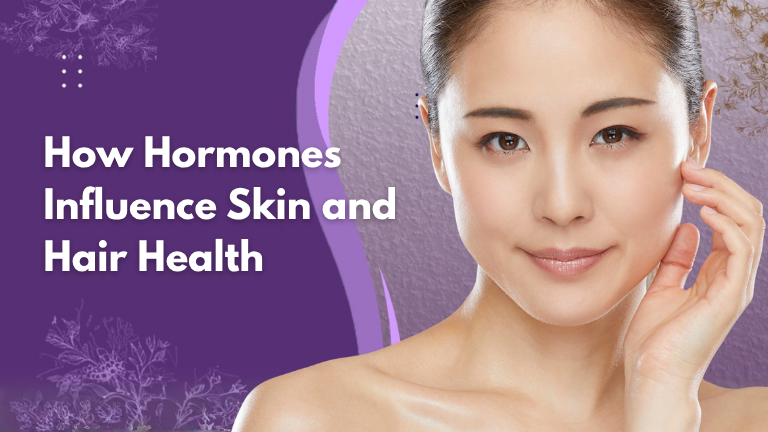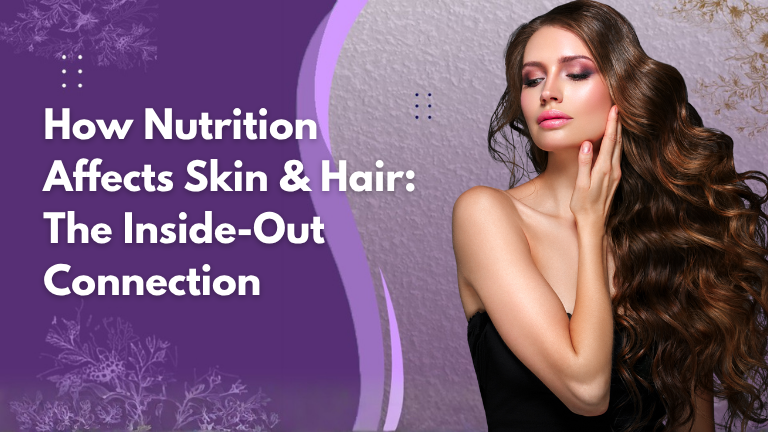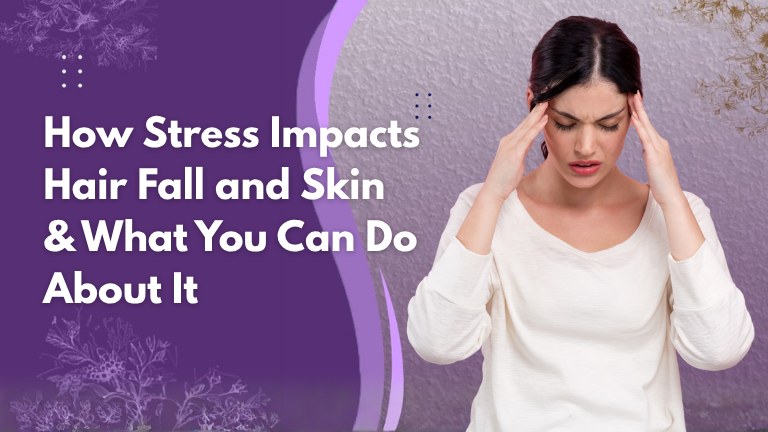Introduction
For many, Acne is a challenging phase in life. But even after the breakout is low, they can leave the acne mark behind a dull, often disappointing reminder. These scars are more than just cosmetic blemishes; They can significantly affect confidence and how one feels about their skin. While a fresh grain eventually fades, true acne scars represent permanent changes in the skin’s texture, indicating deep damage to the skin’s collagen.
Understanding a variety of acne marks is the first step towards effective treatment. Each type requires a specific approach, and the one that works may be ineffective for another. This broad guide will run through the five most common types of acne marks and detail various modern remedies available to help you restore the lubrication and clarity of your skin. When working with acne marks, professional guidance is unavoidable. It is necessary to find a reputed dermatology hospital in Chennai or a special skin care clinic in Chennai to get an accurate diagnosis and find the best skin clinic to get an individual treatment plan for the Chennai experience. The correct care from the best dermatology hospital in Chennai can actually change your skin.
What are Acne Scars and Why Do They Occur?
Before classifying scars, we need to differentiate between the real acne scars and the post-inflammatory marks.
- Post-Inflammatory Hyperpigmentation (PIH): These are dark spots (red, brown, or black) left after a pimple heals. They are flat and result from excess melanin production. They are not true scars and often fade over months with time and sun protection.
- Post-Inflammatory Erythema (PIE): These are red or purple flat spots, common on lighter skin tones, and result from dilated blood vessels after inflammation. Like PIH, they are not true scars and can fade.
True acne scars, on the other hand, represent permanent textural changes to the skin. They form when the inflammation from an acne lesion is so severe that it damages the surrounding collagen and elastic tissue. When the skin tries to repair itself, it either produces too little tissue (leading to depressions) or too much tissue (leading to raised scars). This imbalance in the healing process is what ultimately creates the different types of scars we see.
The 5 Most Common Acne Scar Types and Their Features
Acne scars generally belong to two types: atrophic (sunken) scars are much more frequent, and hypertrophic (elevated) scars.
Ice Pick Scars:
- Appearance: These are likely the most difficult to treat because of their specialized structure. They are V-shaped, deep, narrow indentations that look like a small, sharp ice pick puncture. They penetrate deep into the dermis.
- Cause: They develop when a deep, inflamed lesion destroys tissue, resulting in a column-like space.
- Location: Most common on the cheeks and forehead.
Boxcar Scars:
- Appearance: These are wider than ice pick scars with well-defined, steep, angular edges, giving them a box-like appearance. They can be shallow or deep.
- Cause: They are caused by inflammatory breakouts that dissolve collagen, leaving a patch of skin that sinks.
- Location: Usually located on the temples and cheeks, where the skin is comparatively thicker.
Rolling Scars:
- Appearance: These are broad, shallow depressions that give the skin a wavy or “rolling” appearance. They don’t have sharp edges but rather smooth, sloping shoulders.
- Cause: They develop when fibrous bands of tissue form under the skin, pulling the epidermis downwards, creating a tethered look.
- Location: Most often seen on the cheeks and jaw.
Hypertrophic Scars:
- Appearance: In contrast to the depressed scars, hypertrophic scars are raised, firm, and usually red or pink bumps. They form exactly at the location of the acne lesion and do not cross the original wound edge.
- Cause: They result from an overproduction of collagen during the healing process.
- Location: More common on the chest and back, though they can occur on the face.
Keloid Scars:
- Appearance: Similar to hypertrophic scars in being raised and firm, but keloids are more aggressive. They are thick, often purplish or dark, and notoriously grow larger than the original acne lesion, spreading beyond its boundaries.
- Causes: An excessive and unusual collagen production during treatment, often in individuals with a genetic tendency.
- Location: When acne is less common on the face, it may appear on the jaw, neck, chest, and back.
Understanding these specific types is paramount, as different scar structures respond to different treatments. This is why it is very important to consult an expert for advice from the skin care clinic in Chennai or the best skin care clinic in Chennai.
How to treat acne marks?
An anticipated approach is required to effectively treat acne marks, which often include a combination of treatments. The best treatment plan depends on the type of scar, severity, and location, as well as your skin type and downtime tolerance. It is important to consult with a specialist in Chennai to determine the most appropriate option for you. You can consult with a specialist in dermatology or a specialist in a dermatology hospital. Self-healing can be ineffective and even harmful.
Treatment Options for Atrophic (Depressed) Scars (Ice Pick, Boxcar, Rolling):
For ice pick and other depressed scars, therapeutic options are those that induce the production of collagen or lift and fill in the depressions.
Chemical Peels:
- How chemical peels work: Applying different acids in strengths to help peel away top layers of the skin, leaving new skin and possibly remodeling collagen.
- Types
- TCA CROSS (Chemical Reconstruction Of Skin Scars): A very concentrated TCA is applied only to the base of ice pick scars to stimulate collagen.
- Medium/Deep Peels: May improve the overall texture of the skin, as well as superficial boxcar/rolling scars.
- Benefits: Improves skin texture, may be able to address superficial scars.
- Considerations: Multiple sessions required; downtime varies with depth of peel.
Dermal Fillers:
- How they work: Injectable substances (like hyaluronic acid) are used to fill the depressions of rolling or shallow boxcar scars, plumping up the skin to make it smoother.
- Benefits: Immediate results, minimal downtime.
- Considerations: Temporary (effects last 6-18 months), requires repeat injections.
Microneedling (Collagen Induction Therapy):
- How it works: A device with fine needles creates controlled micro-injuries on the skin’s surface. This stimulates the body’s natural wound healing process, leading to increased collagen and elastin production.
- Benefits: Effective for rolling and shallow boxcar scars, improves overall skin texture, minimal downtime compared to ablative lasers. Often combined with PRP for enhanced results.
- Considerations: Multiple sessions are needed (typically 3-6).
Laser Resurfacing:
- How it works: Lasers remove damaged skin layers and stimulate collagen production.
- Types:
- Ablative Lasers (e.g., CO2, Erbium YAG): Remove thin layers of skin, allowing new, healthier skin to grow. Highly effective for deep scars but involves significant downtime (weeks) and higher risks.
- Non-Ablative Lasers (e.g., Fraxel, Picosure, Nd: YAG): Target underlying tissue without removing the top layer, stimulating collagen with less downtime. Multiple sessions are required, and results are more gradual.
- Benefits: Significant improvement in skin texture and scar depth for various scar types.
- Considerations: Costly, requires specialized expertise. These are advanced treatments often available at the best skin clinic in Chennai.
Subcision:
- How it works: A needle is inserted under the skin to break the fibrous bands that pull rolling scars downwards. This releases the tension, allowing the skin to lift and flatten.
- Benefits: Particularly effective for rolling scars. Often combined with fillers or other treatments.
- Considerations: Can cause bruising.
Punch Excisions/Grafting:
- How they work: For deep ice pick or boxcar scars, the scar is surgically cut out (excised) and the wound is either stitched closed (punch excision) or replaced with a small skin graft from another area (punch grafting).
- Benefits: Can effectively remove very deep, isolated scars.
- Considerations: Leaves a new, smaller scar that is usually less noticeable.
Treatment Options for Hypertrophic and Keloid (Raised) Scars:
These scars require methods to reduce excess collagen and flatten the tissue. For more complex cases, a specialized dermatology hospital often offers comprehensive care.
Corticosteroid Injections:
- How they work: Injections of corticosteroids directly into the scar tissue help to break down excess collagen and reduce inflammation, leading to flattening and softening of the scar.
- Benefits: Ideal for flattening raised scars.
- Precautions: Needs to have several injections; it may also cause thinning or color changes in the skin at the injection site.
Silicone Sheets/Gels:
- How they work: Silicone sheets or gels, when applied over the scar, provide moisture but are breathable and help to flatten and soften raised scars after time.
- Benefits: Non-invasive, can be used in home.
- Precautions: Long-term, systematic application is a must.
Cryotherapy
- How it works: Liquid nitrogen is used to freeze the scar tissue, causing cell destruction and flattening.
- Benefits: Can be effective, especially for smaller keloids.
- Considerations: Can cause temporary blistering, pain, or hypopigmentation (lightening of skin).
Surgical Excision:
- How it works: In some severe cases, especially for keloids, surgical removal of the scar may be an option. This is often followed by other treatments (like injections or radiation) to prevent recurrence.
- Benefits: Can remove large or resistant scars.
- Considerations: Risk of recurrence, new scar formation.
Pulsed Dye Laser (PDL) Therapy:
- How it works: This laser targets blood vessels within the scar, reducing redness and helping to flatten hypertrophic and keloid scars by limiting blood supply and collagen production.
- Benefits: Effective for reducing redness and thickness.
- Considerations: Multiple sessions required.
Importance of professional guidance: Choosing your skincare partner
Self-treatment acne marks can further increase the damage to the skin, ineffective consequences, frustration, or even skin damage. The complexity of different scar types and the nuances of various treatments underlined the full requirement of professional guidance.
When seeking treatment for acne marks, it is paramount to find a reputed dermatology hospital in Chennai. You want a feature that not only understands the science behind scar formation but also offers expertise and technology to provide safe and effective solutions. Look for the best dermatology hospitals in Chennai that are known for their broad views on skin health.
What to see here while choosing your skin care clinic in Chennai:
- Eligible experts: Ensure that the clinic board is appointed with widespread experience in scar revision by a board-certified dermatologist or plastic surgeon. The best skin doctor in Chennai will have credibility and experience to return his recommendations.
- Comprehensive evaluation: A good skin care clinic in Chennai will assess the skin to correctly identify the scar type, severity, and unique characteristics of your skin.
- Limit of treatment options: Chennai services should provide a variety of treatments to a feature offering the best skin care clinic, indicating that they can tailor solutions rather than offering a size-fit-all approach. It may include various lasers, microneedling devices, and injected options.
- Technology and Safety: Inquire about the equipment they used. Modern, well-maintained technology is important for effective and safe treatment. A skin hospital in Chennai or the Best Dermatology Hospital will prioritize it.
- Transparent Communication: The chosen skin care hospital in Chennai should clearly explain the treatment process, potential outcomes, risks, expected downtime, and associated costs.
- Patient Reviews and Reputation: Look for clinics with strong, positive reviews. Checking feedback for the best skin hospital in Chennai or the best skin care hospital in Chennai can give you insight into patient satisfaction.
Investing in a consultation at a highly-regarded dermatology hospital in Chennai is the wisest decision you can make on your journey to clearer, smoother skin.
Conclusion
Acne scars, while a permanent reminder of previous breakouts, are not a permanent consistency on your skin. Five different types- ice pick, boxcar, rolling, hypertrophic, and by understanding the diverse array of keloids and available modern remedies, you can fulfill your skin concerns with knowledge and hope. Effective solutions for almost all types of scars are present through targeted injections and subdivisions from advanced laser therapy and microneedling.
The passage of smooth skin begins with professional guidance. Do not try to treat severe acne marks on your own. It is an important first step to consult with an expert at a prestigious dermatology hospital in Chennai. They can correctly diagnose your specific scar types and craft an individual treatment plan that is both safe and effective. With proper dermatology expertise coming from the best hospital in Chennai, healthy skin is well within your reach, to gain confidence and embrace a smooth colour.
FAQ
1. Are all acne marks scars?
No. The post-inflammatory hyperpigmentation causes dark spots, and the post-inflammatory erythema-pie causes red/purple spots, both can continue for months or long, after acne episodes after acne episodes, but can stay away from time without treatment. True acne scars are permanent changes in the skin texture, depressed atrophic or raised-hypertrophic/keloid.
2. Do acne marks fade on their own?
Post-inflammatory hyperpigmentation (dark spots) and erythema (red spots) can naturally fade in several months, but true textual acne marks are permanent and do not disappear on their own. They require professional dermatology treatment to improve their appearance.
3. How many treatment sessions are required for acne marks?
The number of sessions varies significantly depending on the type and severity of the scar, the selected treatment method, and individual response. Most treatment, such as laser therapy or microneedling, requires a series of different sessions (eg, 3–6 or more) for optimal results.
4. Is acne scar treatment painful?
Most acne scar treatment involves some level of discomfort. Topical numbers are commonly used to reduce pain during procedures such as microneedling, laser resection, and chemical peels. More intensive treatments may require local anesthesia. Your doctor will discuss the pain management options with you.
5. Can the diet affect acne scars?
While the diet will not treat existing scars, a good, balanced diet rich in vitamins, minerals, and antioxidants can support healthy skin and especially treatment. More importantly, using the diet to manage active acne episodes helps prevent further new scars.




